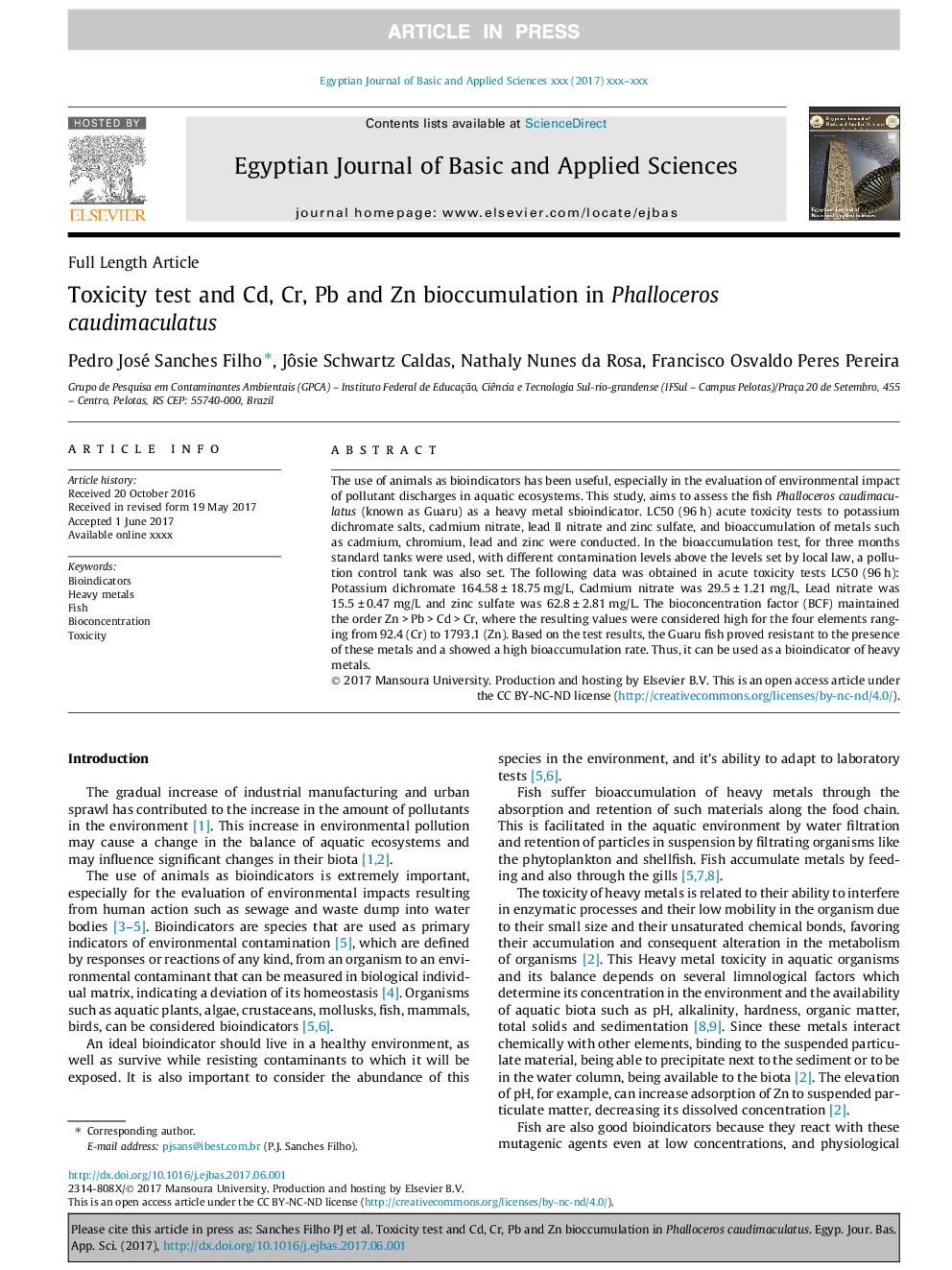| Article ID | Journal | Published Year | Pages | File Type |
|---|---|---|---|---|
| 6952327 | Egyptian Journal of Basic and Applied Sciences | 2017 | 6 Pages |
Abstract
The use of animals as bioindicators has been useful, especially in the evaluation of environmental impact of pollutant discharges in aquatic ecosystems. This study, aims to assess the fish Phalloceros caudimaculatus (known as Guaru) as a heavy metal sbioindicator. LC50 (96 h) acute toxicity tests to potassium dichromate salts, cadmium nitrate, lead II nitrate and zinc sulfate, and bioaccumulation of metals such as cadmium, chromium, lead and zinc were conducted. In the bioaccumulation test, for three months standard tanks were used, with different contamination levels above the levels set by local law, a pollution control tank was also set. The following data was obtained in acute toxicity tests LC50 (96 h): Potassium dichromate 164.58 ± 18.75 mg/L, Cadmium nitrate was 29.5 ± 1.21 mg/L, Lead nitrate was 15.5 ± 0.47 mg/L and zinc sulfate was 62.8 ± 2.81 mg/L. The bioconcentration factor (BCF) maintained the order Zn > Pb > Cd > Cr, where the resulting values were considered high for the four elements ranging from 92.4 (Cr) to 1793.1 (Zn). Based on the test results, the Guaru fish proved resistant to the presence of these metals and a showed a high bioaccumulation rate. Thus, it can be used as a bioindicator of heavy metals.
Related Topics
Physical Sciences and Engineering
Computer Science
Signal Processing
Authors
Pedro José Sanches Filho, Jôsie Schwartz Caldas, Nathaly Nunes da Rosa, Francisco Osvaldo Peres Pereira,
